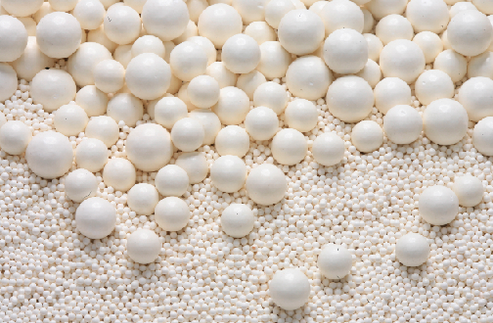Zirconium Silicate Beads, a remarkable material in various industries, boasts a multitude of applications owing to its exceptional properties and versatility. Let's delve into the world of these beads, uncovering their uses, manufacturing processes, and advantages.

Zirconium Silicate Beads have emerged as a pivotal component across industries due to their remarkable properties and diverse applications. From their unique composition to their manufacturing processes and widespread utilization, understanding these beads provides insight into their significance in multiple sectors.
The intricate composition of Zirconium Silicate Beads determines their efficacy. These beads primarily comprise zirconium, silicon, and oxygen atoms arranged in a crystalline structure. This arrangement contributes to their exceptional durability and resistance, setting them apart in various applications.
Zirconium Silicate Beads are characterized by their hardness, thermal stability, and chemical inertness. Their high density and uniform size ensure consistent performance, making them a preferred choice in industries requiring precision and reliability.
The manufacturing of Zirconium Silicate Beads involves intricate processes, typically including fusion, cooling, and milling. Various methods like sol-gel synthesis or precipitation routes contribute to producing beads with specific properties tailored to diverse applications.
Strict quality control protocols ensure the uniformity and purity of Zirconium Silicate Beads. Advanced techniques such as particle size analysis and chemical composition tests guarantee their adherence to industry standards.
These beads find application in medical devices, owing to their biocompatibility and durability. They are utilized in dental prosthetics, implants, and medical instruments, ensuring reliability and longevity.
Industries like ceramics, paints, and electronics extensively utilize Zirconium Silicate Beads due to their abrasion resistance, thermal properties, and electrical insulation, enhancing the performance and quality of various products.
Their inert nature and non-toxic properties make Zirconium Silicate Beads an eco-friendly option compared to other materials. Their recyclability adds to their allure, aligning with sustainability goals in modern industries.
1.What distinguishes Zirconium Silicate Beads from other materials?
Zirconium Silicate Beads stand out due to their exceptional hardness, thermal stability, and chemical inertness, setting them apart in various industrial applications.
2.Are Zirconium Silicate Beads environmentally friendly?
Absolutely! These beads are non-toxic and inert, making them an eco-friendly choice in industries focusing on sustainability.
3.Where are Zirconium Silicate Beads predominantly used?
These beads find extensive use in industries such as ceramics, paints, medical devices, and electronics, owing to their versatile properties.
4.How are Zirconium Silicate Beads manufactured?
Manufacturing involves complex processes like fusion, cooling, and milling, ensuring the production of beads with desired properties.
5.Can Zirconium Silicate Beads be recycled?
Yes, their recyclability adds to their eco-friendly profile, making them a sustainable option in various industries.
6.What industries benefit the most from using Zirconium Silicate Beads?
Industries like ceramics, paints, electronics, and medical devices leverage the unique properties of these beads to enhance product quality and performance.
Zirconium Silicate Beads, with their exceptional properties and diverse applications, stand as a testament to innovation and efficiency. From their composition to their eco-friendly nature, these beads continue to revolutionize multiple industries, offering reliability and sustainability.

Submit your demand,
we will contact you ASAP.

Sanxin New Materials Co., Ltd. focus on producing and selling ceramic beads and parts such as grinding media, blasting beads, bearing ball, structure part, ceramic wear-resistant liners, Nanoparticles Nano Powder

